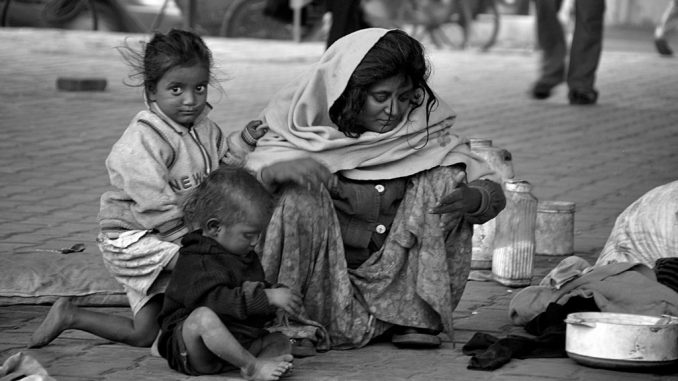
This year’s theme for International Day for the Eradication of Poverty is “coming together with those furthest behind to build an inclusive world of universal respect for human rights and dignity.”
Joseph Wresinski was one of the first persons to highlight the direct link between human rights and extreme poverty. In the year 1987, as UN statement says so, he appealed to the Human rights Commission to examine the same while he came with this observation:
“Wherever men and women are condemned to live in extreme poverty, human rights are violated. To come together to ensure that these rights be respected is our solemn duty.”
International Day for the Eradication of Poverty, 2018
October 17 is marked on the calendar to commemorate the day dedicated to highlighting the need and ways for the eradication of poverty. International Day for the Eradication of Poverty, 2018 marks the launch of Third United Nations Decade for the Eradication of Poverty (2018-2027), under the theme ‘Accelerating global actions for a world without poverty’.

The theme for International Day for the Eradication of Poverty, 2018 is:
“Coming together with those furthest behind to build an inclusive world of universal respect for human rights and dignity.”
It underscores the importance of reaching out to people living in poverty and building an alliance around their priorities with citizens from all backgrounds to end extreme poverty. It recognises the important mutual roles and relationships we have with each other based on our common and equal dignity.
Where does India’s wealth lie?
In 2017, Oxfam survey revealed that India’s richest 1 per cent held 58 per cent of the country’s total wealth which was higher than the global figure of about 50 per cent. But, the story doesn’t end here.
The new survey which came out in early 2018 showed that India’s richest 1 per cent now holds 73 per cent of India’s wealth.
Instead of bridging the gap between the rich and the poor, the distance grew even longer; 25.86 per cent to be precise.
Around 67 crores Indians comprising the populations poorest half saw their wealth rise by just 1 per cent whereas the wealth of India’s richest 1 per cent increased over Rs 20.9 lakh crores — an amount equivalent to the total budget of the central government in 2017-18, Oxfam India said.
In India, it will take 941 years for a minimum wage worker in rural India to earn what the top paid executive at a leading Indian garment firm earns in a year, the study found.
It also added that India added 17 new billionaires last year, taking the total number to 101.
Oxfam India CEO Nisha Agarwal said, “The billionaire boom is not a sign of a thriving economy but a symptom of a failing economic system,” reported PTI.
She also said that these inequalities are the result of a package of reforms adopted during the big bang liberalisation of 1991 and the subsequent policies.
Why does India need to worry?
The report titled ‘The Widening Gaps: India Inequality Report 2018’ noted that the country ranks among the most unequal countries in the world on all parameters of income, consumption, and wealth, and the reason behind this is the ‘lopsided’ policy choices made by successive governments.
The report analysed various sources of data and describes how the path of inequality has changed in India-from being stagnant in the 1980s, to its increase since 1991, and to its subsequent and continued surge in recent years until 2017.
“What is particularly worrying in India’s case is that economic inequality is being added to a society that is already fractured along the lines of caste, religion, region and gender. Apart from being a moral concern, reducing inequality is central to the functioning of India’s democracy,” said Professor Himanshu, author of the report.
“The growing divide undermines democracy and promotes corruption and cronyism,” she added.
Source: India Today

Leave a Reply